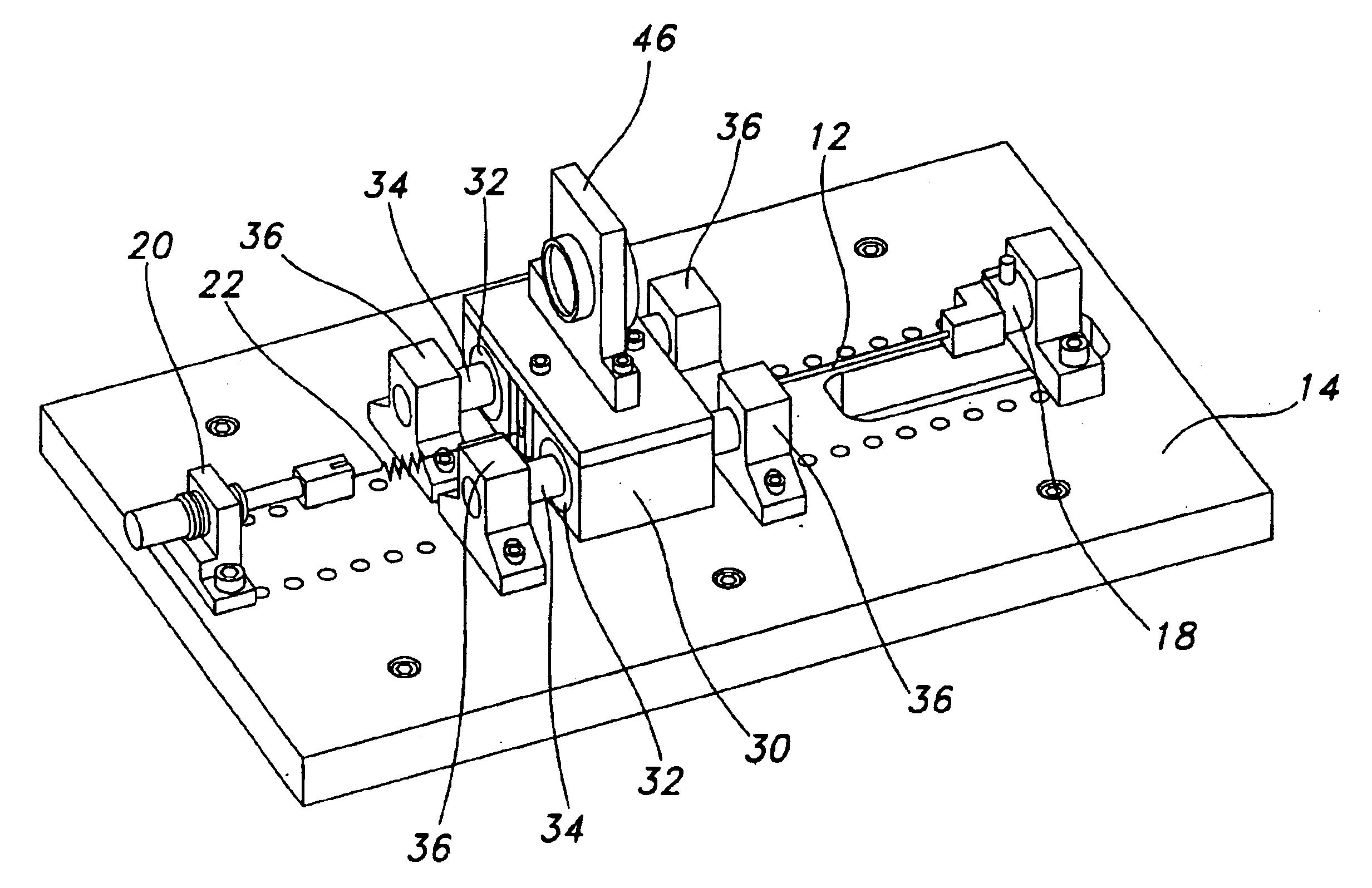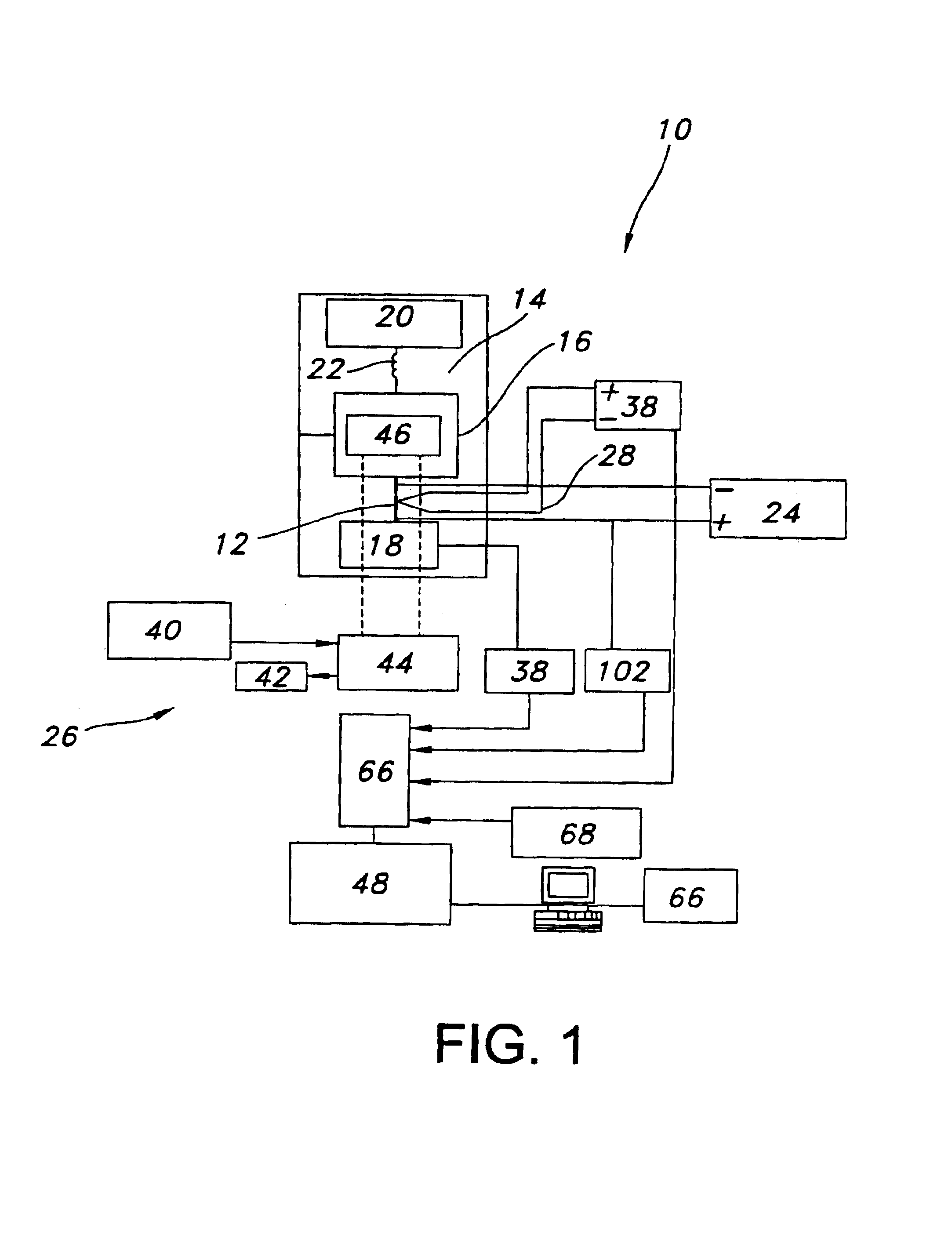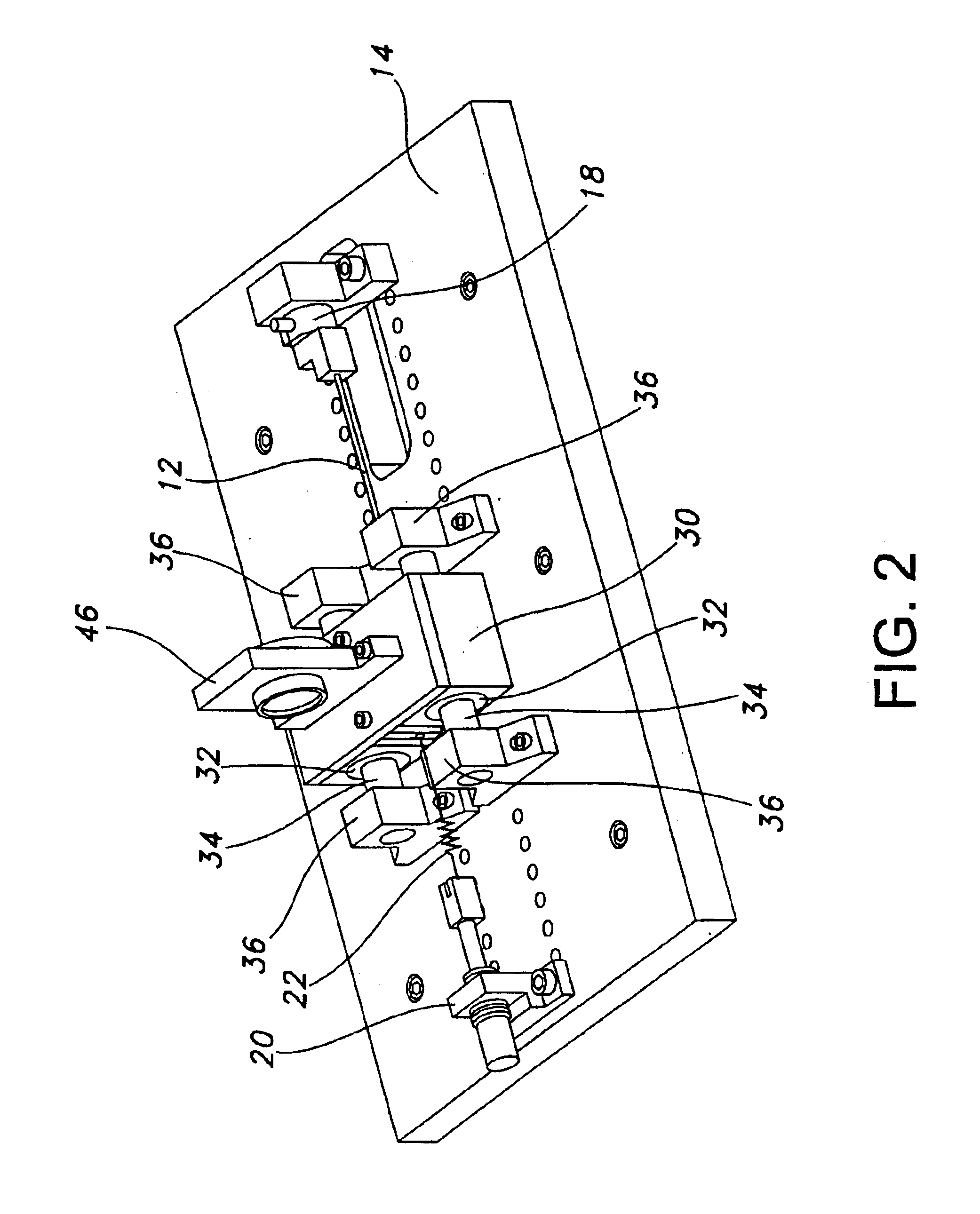System and device for characterizing shape memory alloy wires
- Summary
- Abstract
- Description
- Claims
- Application Information
AI Technical Summary
Benefits of technology
Problems solved by technology
Method used
Image
Examples
example 1
[0036]An instrument 10 for measuring a property of a shape memory alloy wire 12 is shown schematically in FIG. 1. The instrument 10 includes a base plate 14, a non-contact movable mass 16, a force gauge 18, an actuator 20, and a biasing spring 22 operatively connecting the movable mass 16 and the actuator 20. SMA wire 12 is attached between the movable mass 16 and the force gauge 18. Actuator 20 is a micrometer, and extending or retracting the micrometer adjusts the preload force on the SMA wire 12 via biasing spring 22. Force gauge 18 is a load cell capable of measuring the force generated by the SMA wire 12 during actuation. Actuation of the SMA wire 12 is initiated by supplying a voltage from s power supply 24. The current being supplied will vary on the diameter of the SMA wire 12 being tested. Required currents in accordance with various SMA wire diameters may be obtained from the manufacturers.
[0037]The position of the movable mass 16 caused by SMA wire 12 actuation is measure...
example 2
[0044]FLEXINOL wire having a diameter of 38.1 μm, 50.8 μm, 101.6 μm, and 152.4 μm (Dynalloy Inc, Costa Mesa, Calif.) was tested using the instrument described in Example 1. The material composition is 55.3% Ni by weight, Ti (Balance) and impurities less than 0.03%. The actuation temperatures of the material under 100 MPa load are recovery / contraction temperature of 70° C. ±15° C. and extension / cooling temperature of 50° C. ±15° C.
[0045]A pre-crimped SMA wire 12 was attached between the force gauge 18 and one end of the linear motion stage 30 using non-metallic screws and washers. A biasing spring 22 was connected between the other end of the linear motion stage 30 and the actuator 20. The preload force was calculated based on the preload stress in the wire (Table 1).
[0046]
TABLE 1Preload and Actuation StressActuation stress, Pa1 × 108Preload stress, Pa7 × 107
[0047]Nominal preload forces for different wire 12 diameters are provided in Table 2.
[0048]
TABLE 2Preload Forces for Different ...
example 3
[0056]The instrument 10 described in Example 1 was used to evaluate the effect of multiple actuation cycles of a SMA wire 12. The wire 12 was attached to the instrument as described in Examples 1 and 2. Desired voltage, current, number of actuation cycles, time of supply of current, and cooling time were input using controller 68. Variation in force and displacement were recorded by the data acquisition system 48, using the calculations described in Example 2. As shown in FIGS. 9a and 9b, the instrument recorded the variation in steady state force and displacement over 100 actuation cycles. It was shown that steady state force and displacement decrease with increasing number of actuation cycles, illustrating mechanical fatigue of the SMA wire 12 over time.
PUM
 Login to View More
Login to View More Abstract
Description
Claims
Application Information
 Login to View More
Login to View More - R&D
- Intellectual Property
- Life Sciences
- Materials
- Tech Scout
- Unparalleled Data Quality
- Higher Quality Content
- 60% Fewer Hallucinations
Browse by: Latest US Patents, China's latest patents, Technical Efficacy Thesaurus, Application Domain, Technology Topic, Popular Technical Reports.
© 2025 PatSnap. All rights reserved.Legal|Privacy policy|Modern Slavery Act Transparency Statement|Sitemap|About US| Contact US: help@patsnap.com



